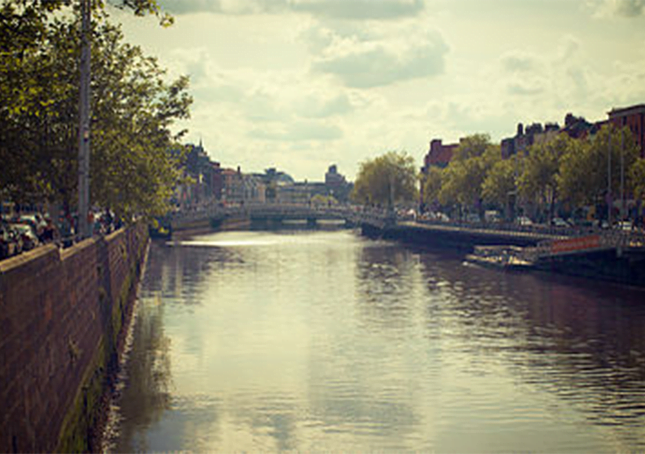River Liffey

The River Liffey (Irish: An Life) is a river in Ireland that flows through the centre of Dublin. Its major tributaries include the River Dodder, the River Poddle and the River Camac. The river supplies much of Dublin’s water and a range of recreational activities.
Ptolemy’s Geography (2nd century AD) described a river, perhaps the Liffey, which he labelled Οβοκα (Oboka). Ultimately this led to the name of the River Avoca.
The Liffey was previously named An Ruirthech, meaning “fast (or strong) runner”. The word Liphe (or Life) referred originally to the name of the plain through which the river ran, but eventually came to refer to the river itself.
The word derives from the same root as Welsh llif (flow, stream), namely Proto-Indo-European lē̆i-4. It was also known as the Anna Liffey, possibly from an anglicisation of Abhainn na Life, the Irish phrase that translates into English as “River Liffey”. James Joyce embodies the river as “Anna Livia Plurabelle” in Finnegans Wake.
Around 60% of the Liffey’s flow is abstracted for drinking water and to supply industry. Much of this makes its way back into the river after purification in wastewater treatment plants. Despite a misconception that the Guinness brewery is one such commercial user, the facility uses water piped from the Wicklow Mountains.
A well-known sight on the Liffey up to the 1990s, the Lady Patriciaand Miranda Guinness cargo ships were used to export Guinness from the St. James’s Gate Brewery.
As of the early 21st century, the only regular traffic on the river within the city is the Liffey Voyage water tour bus service, which runs guided tours along the River Liffey through Dublin City centre. Departing from the boardwalk downstream of the Ha’penny Bridge, the Spirit of the Docklands was built by Westers Mekaniska in Sweden as a 50-passenger water taxi. Its variable ballast tanks (not unlike a submarine) and low air draught mean that at low tide it can float high, but at high tide it can ride low and still pass below the Liffey’s bridges.
Downstream of the East-Link bridge, the river is still mainly used for commercial and ferry traffic, with some recreational use also. High speed trips out the mouth of the Liffey were also previously available from Sea Safari.
